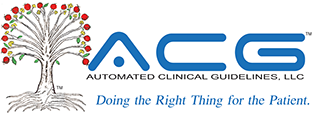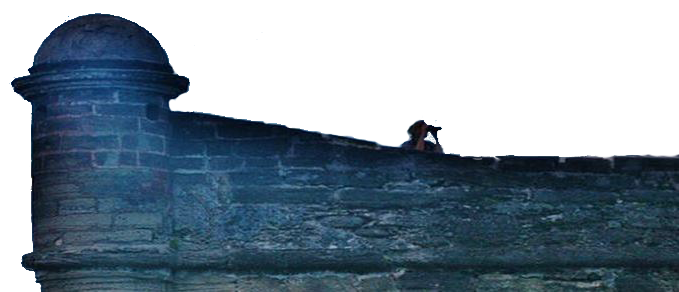
ΨΥΧΗΣ ΙΑΤΡΕΙΟΝ
Endoscopic Treatment of GERD - NONCOVERED Service
Endoscopic Treatment of GERD is not considered reasonable and necessary for the diagnosis or treatment of an injury or disease.
Endoscopic treatment of GERD (CPT codes 43257, 43499, 43999, 49999, and C9724) is noted as a noncovered service.
Some of the emerging techniques and associated tools are considered investigational and this LCD does NOT endorse such procedure.
• NOTE: An Advance Beneficiary Notice
(ABN) is required for items and
services not covered by Medicare
due to being considered not medically
reasonable and necessary.
◦ The beneficiary should be
thoroughly educated about the
benefits and risks of this item or
service.
◦ If such notice is not given, providers
may not shift financial liability for
such items or services to beneficiaries
should a claim for such items or
services be denied by Medicare.
Indications:
• Benefits are not available for endoluminal
treatment for Gastroesophageal Reflux
Disease (GERD) using the Stretta®
procedure, the Bard EndoCinch™ Suturing
System, Plicator™, Enteryx®, EsophyX™ or
similar treatments as these procedures are
not considered reasonable and necessary
for the diagnosis or treatment of an injury or
disease.
• Currently, these procedures are considered
non-covered due to the fact that current
peer-reviewed literature does not support
the efficacy of the services.
• Claims will be denied as "not proven
effective."
- The Stretta® procedure is an endoluminal treatment for GERD in which radiofrequency energy is delivered to smooth muscle of the lower esophageal sphincter (LES).
- A flexible catheter equipped with special needle electrodes for precise energy delivery is placed by mouth into the esophagus and carefully controlled radiofrequency energy is then delivered to the LES and gastric cardia, creating thermal lesions.
- The manufacturer maintains that the changes that occur immediately, and over time, result in a "tighter" LES and a less compliant gastric cardia.
- Additionally, the interruption of nerve pathways in the LES area is believed to reduce the incidence of inappropriate LES "relaxations," leading to an improvement in GERD symptoms.
- Substantial peer-reviewed evidence to fully support these assumptions remains to be published.
- The Bard EndoCinch™ Suturing System and the Plicator™ are intended for use in endoscopic placement of suture(s) in the soft tissue of the esophagus and stomach and for approximation of tissue for treatment of symptomatic gastroesophageal reflux disease.
- EsophyX™ is a device for performing transoral incisionless fundoplication surgery for treating gastroesophageal reflux disease.
- This procedure reconstructs the valve at the top of the stomach that helps prevents acid reflux.
- Enteryx® is an endoscopic, minimally-invasive procedure in which an ethylene vinyl alcohol polymer solution is injected into your lower esophageal sphincter muscle using a small needle.
- This product was recalled in September 2005 due to adverse patient events.
Discussion:
• These procedures are promising for
treatment of patients in whom proton pump
inhibitor therapy fails.
• Clinical data from various studies are
emerging.
• At this time, open-label studies or patient
registries with short term follow-ups are the
dominant source of data.
• The overwhelming preponderance of
reviewers remain equivocal in their support
and have called for randomized controlled
trials with long-term follow-ups.
• In the absence of evidence from such
studies, and in the absence of wide
acceptance, endoscopic treatments for
GERD are not proven effective.
• Therefore, they are not reimbursable even
though some of the treatments may have
associated CPT™ or OPPS codes.
CPT/HCPCS Codes:
43257 ESOPHAGOGASTRODUODENOSCOPY,
FLEXIBLE, TRANSORAL; WITH
DELIVERY OF THERMAL ENERGY TO
THE MUSCLE OF LOWER
ESOPHAGEAL SPHINCTER AND/OR
GASTRIC CARDIA, FOR TREATMENT
OF GASTROESOPHAGEAL REFLUX
DISEASE
43499 UNLISTED PROCEDURE, ESOPHAGUS
43999 UNLISTED PROCEDURE, STOMACH
49999 UNLISTED PROCEDURE, ABDOMEN,
PERITONEUM AND OMENTUM
C9724 ENDOSCOPIC FULL-THICKNESS
PLICATION OF THE STOMACH USING
ENDOSCOPIC PLICATION SYSTEM
(EPS); INCLUDES ENDOSCOPY
K21.0
K21.9
T85.511A
T85.511D
T85.511S
T85.521A
T85.521D
T85.521S
T85.591A
T85.591D
T85.591S
ICD-10 CM Codes that support medical necessity:
Documentation Requirements:
• The patient's medical record must contain
documentation that fully supports the
medical necessity for services included
within this LCD. (See "Indications and
Limitations of Coverage.")
• This documentation includes, but is not
limited to, relevant medical history, physical
examination, and results of pertinent
diagnostic tests or procedures.
Treatment Logic:
• Benefits are not available for endoluminal
treatment for Gastroesophageal Reflux
Disease (GERD) using the Stretta®
procedure, the Bard EndoCinch™ Suturing
System, Plicator™, Enteryx®, EsophyX™ or
similar treatments as these procedures are
not considered reasonable and necessary
for the diagnosis or treatment of an injury or
disease.
Scientific Basis Of Treatment And Bibliography:
• Barnes WE, Hoddinott KM, Mundy S,
Williams M. Transoral incisionless
fundoplication offers high patient
satisfaction and relief of therapy resistant
typical and atypical symptoms of GERD in
community practice. Surg Innov. 2011 Jun;18
(2):119-129.
• Bell RCW, Barnes WE, Carter BJ, et al.
Transoral incisionless fundoplication: 2-year
results from the prospective multicenter
U.S. study. AM Surg. 2014 Nov; 8
(11);1093-1105.
• Bell RCW, Fox MA, Barnes WE, et al.
Univariate and multivariate analyses of
preoperative factors influencing
symptomatic outcomes of transoral
fundoplication. Surg Endosc. DOI
101007Ss00464-014-3557-z.
• Bell RCW, Freeman KD. Clinical and pH
-metric outcomes of transoral
esophagogastric fundoplication for the
treatment of gastroesophageal reflux
disease. Surg Endosc. 2011 Jun;25
(6):1975-1984.
• Hunter JG, Kahrilas PJ, Bell RCW, et al.
Efficacy of transoral fundoplication vs
omeprazole for treatment of
regurgitation in a randomized controlled
trial. Gastroenterology. 2015 Feb;148
(2):324-333.
• Toomey P, Teta A, Patel K. Ross S,
Sukharamwala P, Rosemurgy AS. Transoral
incisionless fundoplication: is it as safe
and efficacious as a Nissen or Toupet
fundoplication? AM Surg. 2014 Sep;80
(9):861-867.
• Trad KS, Barnes WE, Simoni G, et al.
Transoral incisionless fundoplication
effective in eliminating GERD symptoms
in partial responders to proton pump
inhibitor therapy at 6 months: the TEMPO
Randomized Clinical Trial. Surg Innov. 2015
Feb;22(1):26-40.
• Trad KS, Simoni G, Barnes WE, et al. Efficacy
of transoral fundoplication for treatment of
chronic gastroesophageal
reflux disease incompletely controlled with
high-dose proton-pump inhibitors therapy: a
randomized, multicenter, open label,
crossover study. BMC Gastroenterology.
2014 Oct 6;14:174.
• Trad KS, Turgeio DG, Deljkich E. Long-term
outcomes after transoral incisionless
fundoplication in patients with GERD and
LPR symptoms. Surg Endosc. 2012 Mar;26
(3):650-660.
• Wilson EB, Barnes WE, Mavrelis PG, et al. The
effects of transoral incisionless
fundoplication on chronic GERD
patients: 12-month prospective multicenter
experience. Surg Laparosc Endosc Percutan
Tech. 2014 Feb;24 (1):36-46.
• AMA CPT Copyright Statement
• CPT codes, descriptions and other data only
are copyright 2015 American Medical
Association (or such other date of
publication of CPT). All Rights Reserved.


Copyright 2006-2023 Automated Clinical Guidelines, LLC. All rights reserved.
Home Contact FAQ
Account